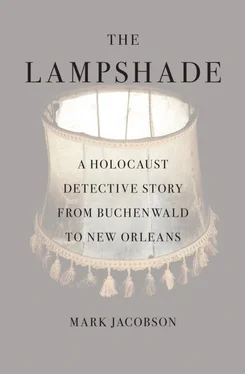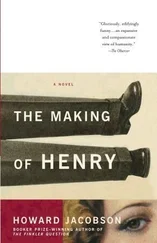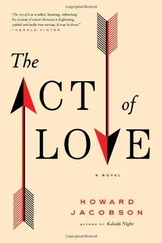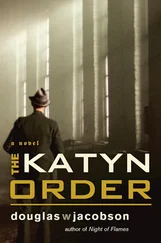Soon after, Dominici and Gaynielle were moved up to New York. “They put us in a Ramada Inn near the airport, room 702 in LaGuardia, New York. I could hear the planes flying by, could see Shea Stadium out the window, and I’m screaming, ‘Hey, Bobby Bonds, bust one my way.’ We got arrested for not paying the subway fare, but they let us go on account of being refugees.
“New York was cool. But I missed New Orleans too much. I bought this fucked-up little Amigo pickup truck with our relief check and drove back down here. Car was a piece of junk. Every hundred miles or so something would fall off it. But we had to get home, you know? It started making really loud noises around Hattiesburg, Mississippi. But I told Gaynielle, we’re so close, we can’t stop now. The thing finally died, right out here, coming down Piety Street. We just cruised the last two blocks and shut it off right where you see it now. My house was a mess. Some squatter kids had been in there, dog shit all over the floor. I ran them out of there with shotguns. But at least I was back, you know.”
That was when he started “finding things,” Dominici said. “There were so many abandoned buildings. People just left everything and got out of town. Plenty of it was ruined, but not all of it. It wasn’t like stealing. No one was coming back for these things.” It was in one of these houses, Dominici said, that he found the lampshade.
“There was this whole pile of stuff piled up in the front room. Everything nobody would ever want. And there it was, right on top of the pile, balanced up there, like a cherry on top of an ice cream sundae. There wasn’t any electricity. Not for months. But I had my flashlight. I remember it was raining. Kind of a mist. The rain was coming in because the roof of the house was ripped off. The way it looked in the flashlight, glistening, it caught my eye. Don’t ask me where I got the idea of what it was. But I’d been watching some Hitler stuff on the History Channel. I’ve always been a history buff.
“You have to trust your instincts, know when something’s special… That’s why I say it was from Katrina. If it wasn’t for the storm, I never would have found it.”
For the life of him, Dominici could not remember in which house he had found the lampshade. It was part of his post-traumatic shock from the storm, he said. There had been so many houses. Nothing, not even a hundred-dollar bill, could jog his memory. It had long been a bad problem with him, remembering things. One time he shot himself in the leg by accident. Sometimes it still hurt, but when he’d roll up his pants to show the scar, half the time he’d have the wrong leg. He chalked it up to his ADD. All he could recall was that the house where he got the lampshade was in the lower Bywater, past Alvar Street, not across St. Claude.
Dominici was born in the neighborhood, on Mazant Street in the late 1950s, before the whites moved out to St. Bernard and Jefferson parishes when the feds forced the schools to integrate. Katrina’s impact on the area had been erratic—not a lot of flooding, but a lot of wind damage. In the middle of 2007 the piles of debris were still in the streets. Maybe half the buildings were inhabited. A knock on about fifty doors followed by a couple of increasingly labored questions as to whether anyone was missing a human skin lampshade produced mostly puzzled looks.
A meeting with Terry Fredericks, a local contractor who’d employed Dave Dominici briefly to gut wrecked houses after the storm, provided a lead. Fredericks said he’d known the Dominicis for a long time and gave Dave a job “only because his mother begged me… I had to fire him after my chain saw suddenly disappeared. He said he didn’t know anything about. But I knew he stole it.”
Hearing the lampshade story, Fredericks said Dominici wasn’t the type to have something “creepy” like that. “He’s just a thief, if you know what I mean.” Fredericks did, however, have a thought. Right on the other side of the Industrial Canal, in the Holy Cross neighborhood, there was a house that Dominici had worked on. “Someone weird must have been living there. We found a crossbow and some knives. I saw David poking around in the debris, like he always does,” Frederick said. “I’d check there.”
The house was on Lamanche Street, in the Lower Ninth Ward, the neighborhood that bore the brunt of Katrina’s worst devastation. St. Claude Avenue on this side of the canal had never exactly been the Miracle Mile, but two years after the storm there wasn’t a single store open for business, not even a gas station. Tourists could still see many of Katrina’s most photographed sights—the boats in the middle of the street, the broken church cross stuck in the upper branches of a leafless cypress tree, a white limo on top of a Mitsubishi pickup truck. At nightfall, the place became forbidding, what with the squatters and the unreliable electricity. Even in midafternoon the desolation of the place, its near-total abandonment, was appalling.
It took a few passes to find Lamanche, its street sign was nothing but a Magic Marker scrawl on an eight-inch piece of broken picket fence nailed to a post. The flooding had been severe here, and fifty feet down the street, nature was taking back the land. Tall reeds had grown up on either side of the narrow, potholed road and slapped against my rental car as I drove through. Amid the runaway growth it was possible to forget the surrounding destruction, to discount the entire man-made history of Louisiana back to its purchase in 1803, when the territory made up, as most people here are happy to remind you, more than half the United States.
Throughout nearby St. Bernard Parish, where the prestorm population of about seventy thousand now had fallen to less than twenty-five thousand, you could drive along the curving streets of devastated subdivisions and occasionally come upon a ranch home that had been renovated. The house looked like a totally normal American suburban dwelling, with the pickup in the driveway, bicycles on the porch, a happy face sticker on a shiny mailbox announcing the family’s name. The homeowner himself might be out front, watering his resodded lawn, seemingly oblivious to the fact that every other dwelling on the block was abandoned, many with fading Do Not Demolish signs in front.
The house on Lamanche where Terry Fredericks suspected Dave Dominici might have found the lampshade was in the middle of a slo-mo fix-up. Work had been done on the roof; the windows were new. Water-damaged Sheetrock leaned against the porch; a tattered plastic sheet covered the side door. Sitting on the porch was a teenager, probably fifteen or so, holding a sleeping baby. Light-skinned in the manner of what is called Creole down here, she was talking on a pink cell phone. She was laughing when I pulled up, but my unannounced presence put a stop to that.
“Do something for you?” the girl asked, warily.
I said I was doing some research on the area and did she know anything about the people who might have lived in the house before the storm.
“Before the storm? Don’t know nothing about before the storm.” Her aunt, whose house in New Orleans East was wrecked in the flood, had just moved in a couple of weeks before. Their stuff, what they had, was still packed in boxes. Asked if she had found anything “strange,” like some old military stuff, or anything foreign, the girl’s mood brightened. Yes, she said. Her aunt had found “this weird money” behind the house. “It’s foreign. I don’t even know where from.”
She got up, taking the baby with her, and returned a few moments later with a canvas bag containing maybe twenty coins. “They might be from anywhere.”
I dumped a couple into the palm of my hand. “They’re Canadian.”
Читать дальше












